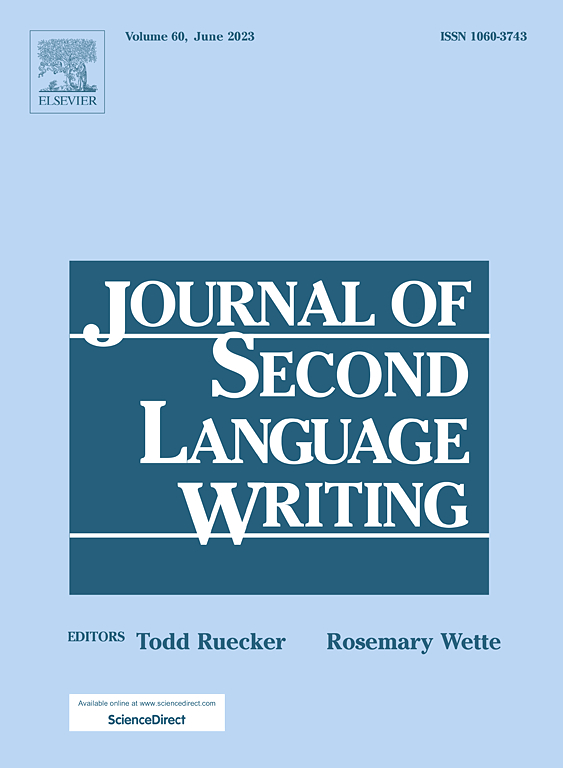Incorporating digital multimodal composition in content teaching: A multimodal analysis of students’ legal popularization videos
IF 4.5
1区 文学
Q1 LINGUISTICS
引用次数: 0
Abstract
Digital multimodal composition (DMC), which involves the use of multiple semiotic resources, has been extensively researched in language education. However, limited research has been conducted on the integration of DMC in content-based instruction. This study aims to fill this research gap by examining the use of DMC in an introductory legal studies course and discussing its potential benefits for content teaching. Five student-generated legal popularization videos, which explain concepts in English company law, were collected. Drawing upon Hafner’s (2015) framework for remix practices in multimodal composition, these videos were analyzed using a software-assisted systemic functional approach to multimodal discourse analysis. This approach is based on the principles that multimodal semiotic resources are combined to create intended meanings and that the choice of resources is socially negotiated. Findings from the multimodal discourse analysis of the DMC product were triangulated with students’ reflective essays to understand the motivations behind their semiotic choices. The analysis reveals that students consciously appropriate various generic, (sub)cultural, and semiotic resources as well as multimodal artefacts when explaining legal knowledge to an indefinite audience. The videos demonstrate that DMC allows learners to critically reconsider the meaning and practical aspects of legal concepts while recontextualizing technical legal knowledge for a general audience.
数字化多模态构图在内容教学中的应用——学生普法视频的多模态分析
数字多模态作文在语言教育中得到了广泛的研究,它涉及到多种符号资源的使用。然而,关于DMC在基于内容的教学中的整合的研究却很少。本研究旨在通过研究DMC在法律研究入门课程中的使用,并讨论其对内容教学的潜在好处,来填补这一研究空白。收集了五个学生制作的法律普及视频,这些视频解释了英国公司法的概念。借鉴Hafner(2015)的多模态构图中再混实践框架,使用软件辅助的多模态话语分析系统功能方法对这些视频进行分析。这种方法是基于多模态符号资源组合以创造预期意义的原则,以及资源的选择是社会协商的。DMC产品的多模态语篇分析结果与学生的反思性文章进行了三角分析,以了解他们符号学选择背后的动机。分析表明,学生在向不确定的受众解释法律知识时,有意识地使用各种通用、(亚)文化和符号学资源以及多模态人工制品。视频表明,DMC允许学习者批判性地重新考虑法律概念的意义和实践方面,同时为普通受众重新构建技术法律知识。
本文章由计算机程序翻译,如有差异,请以英文原文为准。
求助全文
约1分钟内获得全文
求助全文
来源期刊

Journal of Second Language Writing
LINGUISTICS-
CiteScore
8.80
自引率
13.10%
发文量
50
审稿时长
59 days
期刊介绍:
The Journal of Second Language Writing is devoted to publishing theoretically grounded reports of research and discussions that represent a significant contribution to current understandings of central issues in second and foreign language writing and writing instruction. Some areas of interest are personal characteristics and attitudes of L2 writers, L2 writers'' composing processes, features of L2 writers'' texts, readers'' responses to L2 writing, assessment/evaluation of L2 writing, contexts (cultural, social, political, institutional) for L2 writing, and any other topic clearly relevant to L2 writing theory, research, or instruction.
 求助内容:
求助内容: 应助结果提醒方式:
应助结果提醒方式:


